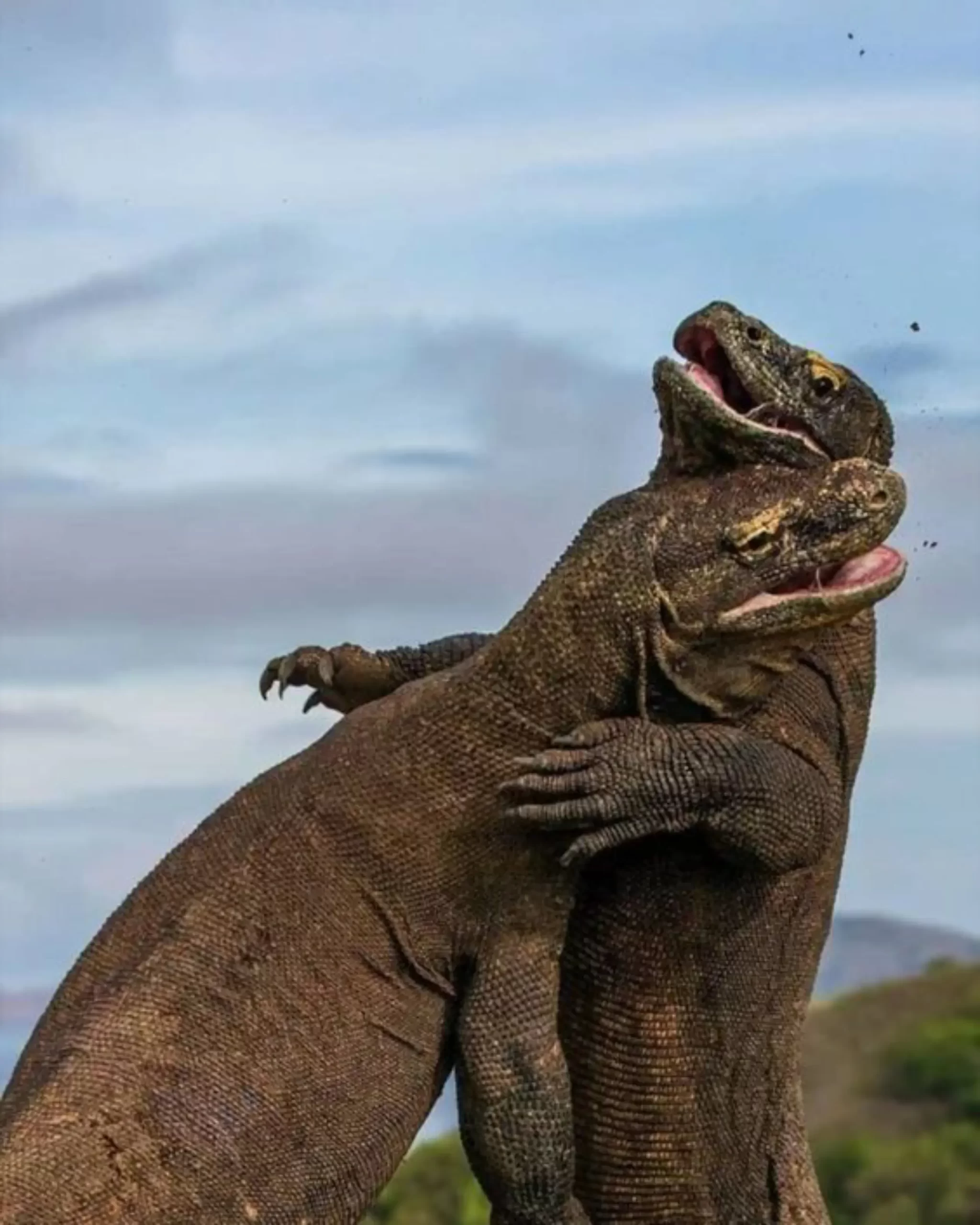Our Office
Jl. Dewi Sartika No. 312, Rt.9/Rw.4. Cawang, Kec. Kramat Jati, Kota Jakarta Timur, Daerah Khusus IbuKota Jakarta 13630
Contact
© Copyright 2025 Dive Trips Indonesia. All right reserved.

The Komodo dragon, Varanus komodoensis, is a remarkable and iconic species native to the Indonesian islands of Komodo, Rinca, Flores, Gili Motang, and Padar. As the largest living lizard on Earth, the Komodo dragon is not only a fascinating creature but also faces the threat of endangerment. In this article, we delve into essential facts about this awe-inspiring reptile, shedding light on its biology, behavior, and the challenges it confronts in the wild.
The Komodo dragon’s formidable appearance is marked by its massive size, with males reaching lengths of up to 10 feet and weighing around 150 pounds. Their scaly, armored skin ranges from gray to brown, providing effective camouflage in their natural habitat.
These dragons are adapted to a range of habitats, from dry savannas to tropical forests. They are most commonly found in the savannas and open grasslands of their native islands, utilizing their powerful limbs and sharp claws for both terrestrial and arboreal activities.
Komodo dragons are apex predators, primarily consuming deer, wild boar, and other mammals. Their large, serrated teeth and powerful jaws are equipped to tear apart the flesh of their prey. Interestingly, the saliva of Komodo dragons contains bacteria that can cause septicemia in bitten animals, contributing to the efficiency of their hunting strategy.
Reproduction in Komodo dragons involves both sexual and asexual methods. While they primarily reproduce sexually, with females laying clutches of eggs, instances of parthenogenesis, where females can produce offspring without mating, have been observed. Facts About the Endangered Komodo Dragon
The International Union for Conservation of Nature (IUCN) categorizes the Komodo dragon as “Vulnerable,” indicating a high risk of endangerment. Threats include habitat loss, poaching, and decreasing prey availability.
Various conservation initiatives aim to protect the Komodo dragon and its habitat. These efforts involve establishing protected areas, monitoring populations, and raising awareness about the importance of conservation.
Komodo dragons play a crucial role in maintaining the balance of their ecosystem. As apex predators, they regulate prey populations, preventing overgrazing and promoting biodiversity.
The increasing popularity of Komodo Island as a tourist destination poses challenges for dragon conservation. Unregulated tourism can disturb natural behaviors, impact habitats, and contribute to the depletion of prey species.
Ongoing research on Komodo dragons continues to unveil new aspects of their biology and behavior. Advances in technology, such as tracking devices, provide valuable insights into their movements and habits in the wild.
Climate change poses an additional threat to Komodo dragons and their habitat. Rising temperatures and alterations in precipitation patterns can affect the availability of water sources and prey, further stressing the species.
Captive breeding programs, both within Indonesia and internationally, aim to bolster Komodo dragon populations. These programs play a vital role in preserving genetic diversity and providing a potential safety net for the species.
Educational programs focusing on the importance of Komodo dragon conservation are crucial. Promoting responsible tourism and highlighting the significance of preserving this species contribute to long-term conservation goals.
Involving local communities in conservation efforts is essential. Engaging residents in sustainable practices and emphasizing the value of living in harmony with the Komodo dragon fosters a sense of responsibility for the species’ well-being.
The Komodo dragon, with its imposing presence and unique characteristics, stands as a symbol of Indonesia’s rich biodiversity. As we navigate the challenges of conservation, collective efforts are imperative to ensure the survival of this extraordinary species. By understanding and addressing the threats it faces, we can strive to preserve the Komodo dragon for generations to come.
While Komodo dragons are generally shy, they can be dangerous if provoked. It’s crucial to exercise caution and respect their natural behaviors.
Habitat loss, poaching, and decreasing prey availability are the primary threats to Komodo dragons.
Komodo dragons are solitary creatures, and encounters between individuals are often territorial and competitive.
Tourists can contribute by practicing responsible tourism, respecting designated areas, and supporting local conservation initiatives.
Conservation programs are working to monitor and mitigate the impact of climate change on Komodo dragon habitats, emphasizing the need for broader climate action.
Jl. Dewi Sartika No. 312, Rt.9/Rw.4. Cawang, Kec. Kramat Jati, Kota Jakarta Timur, Daerah Khusus IbuKota Jakarta 13630
© Copyright 2025 Dive Trips Indonesia. All right reserved.
Social Chat is free, download and try it now here!